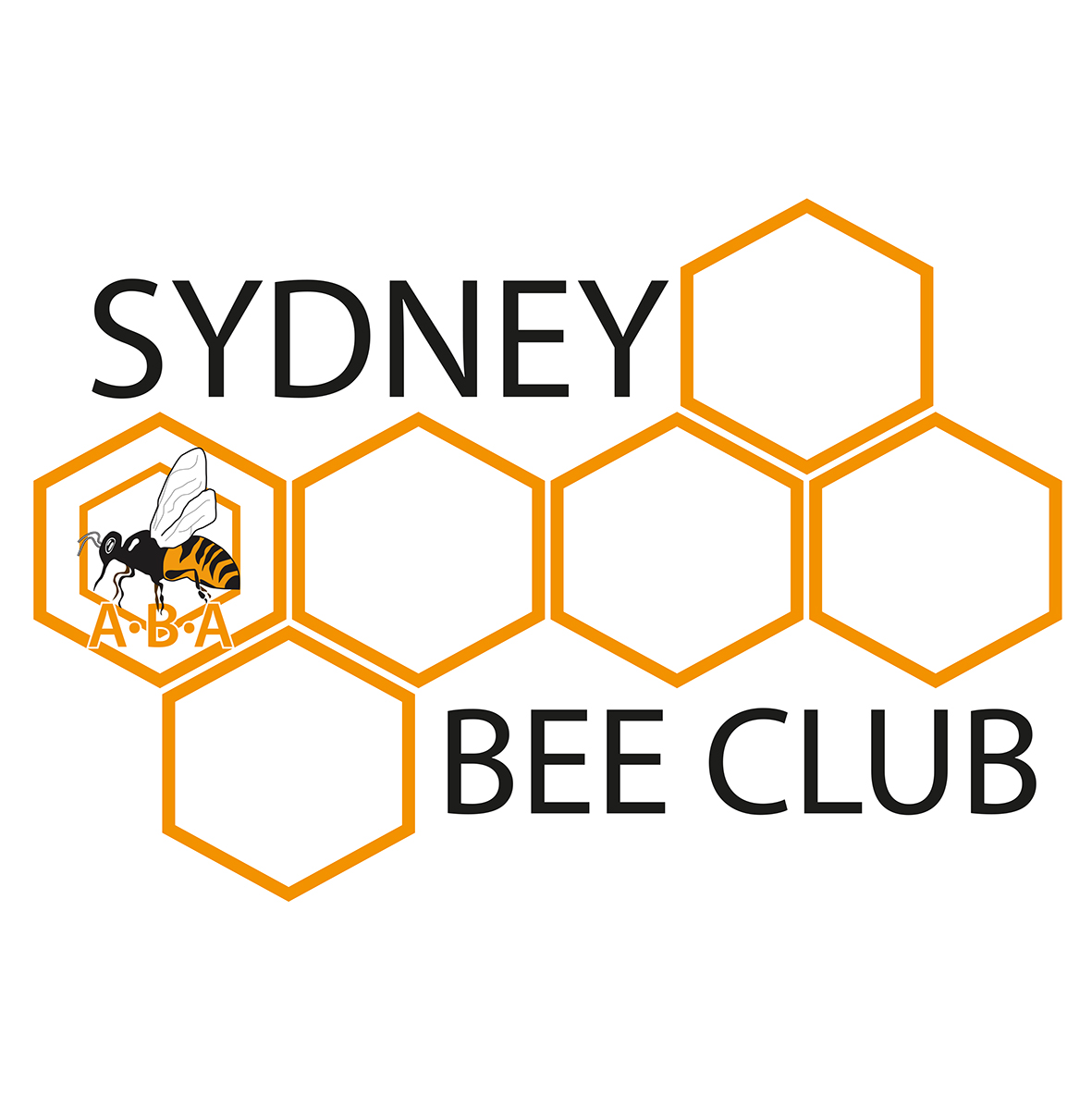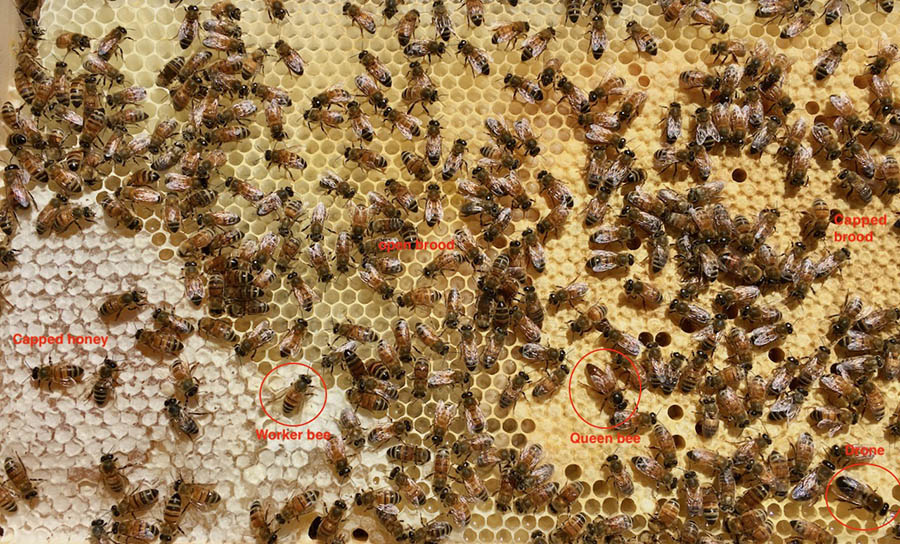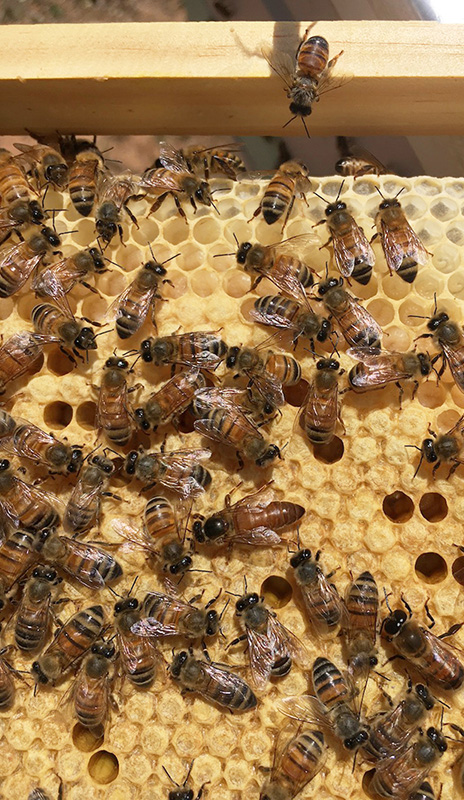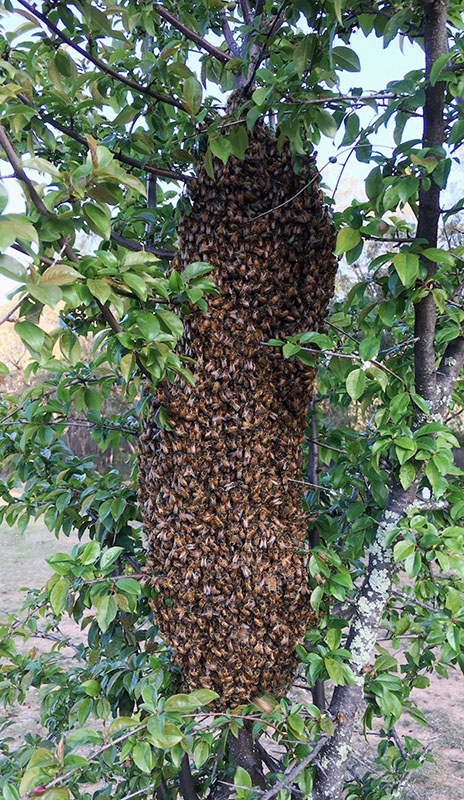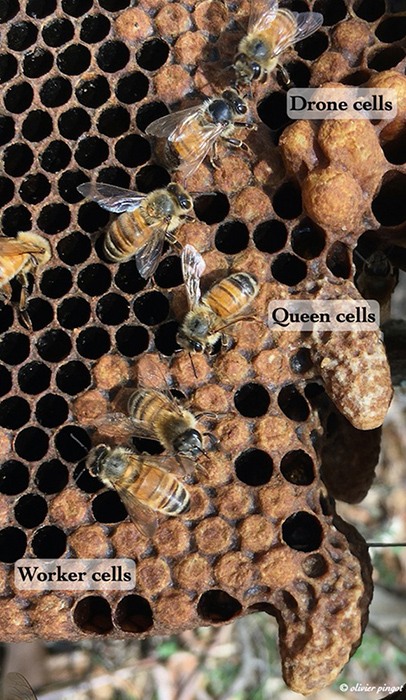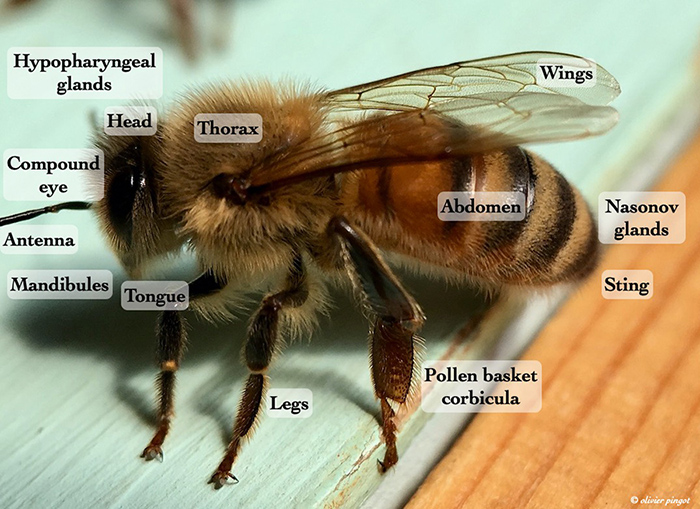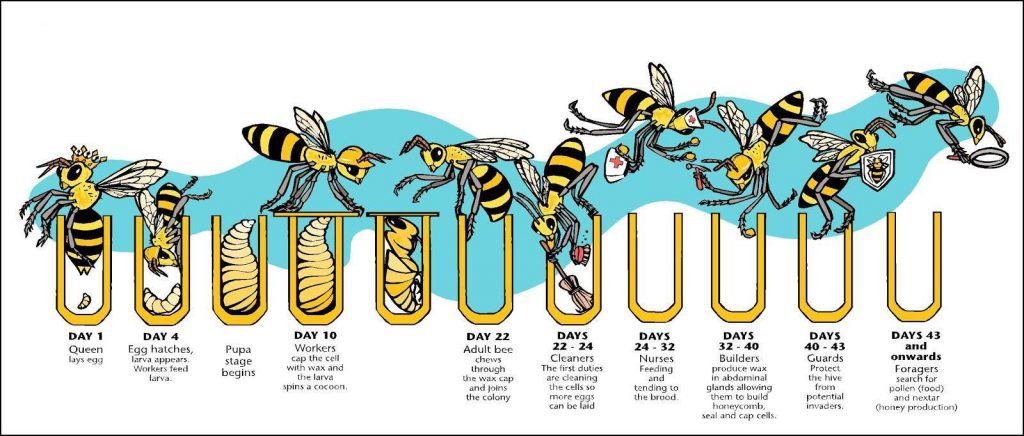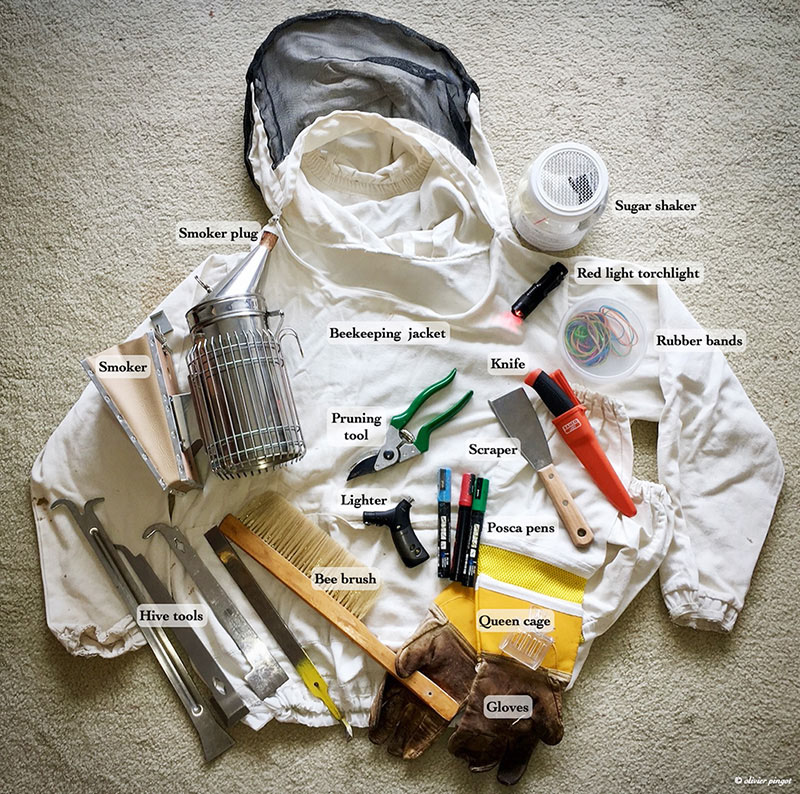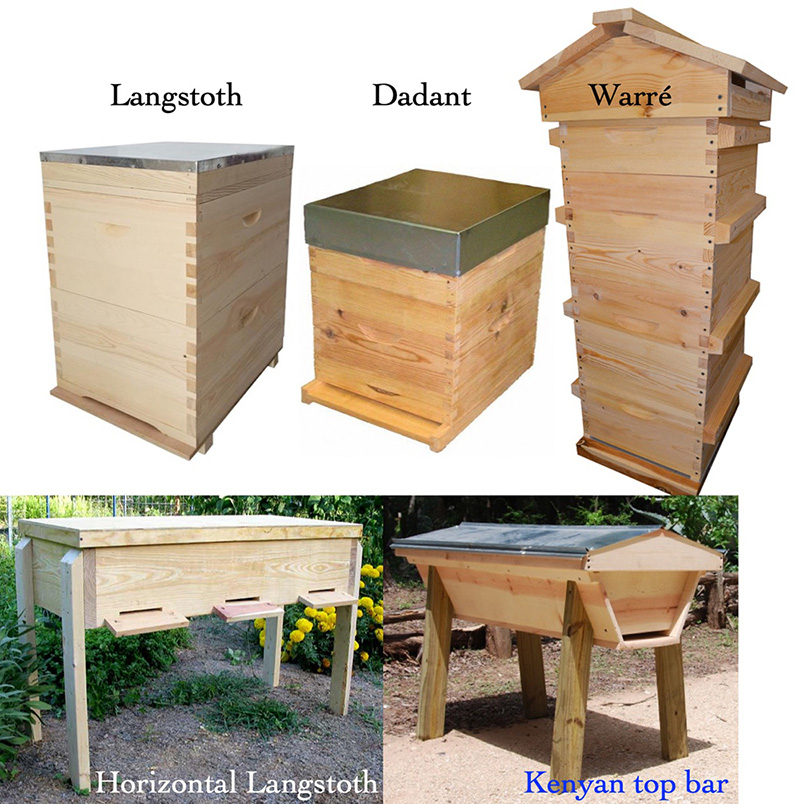EDUCATION
Bees – The Basics
There are many species of bees in Australia and the majority do not live in colonies (hives) but are solitary. Information about Australian native bees can be found here and here.
Professional and recreational Beekeepers focus on the European honey bee. These live in a hive and within the colony there are three castes of bee; a single queen bee, tens of thousands of female worker bees; and up to a thousand male drone bees.
Typically there is only one queen per hive. She is larger than the other bees. Her main job is to lay eggs. In the summer she can lay up to 2000 per day.
The worker bees carry out all the colony maintenance work both inside and outside the hive. Inside the hive they build the comb, tend to the eggs, rear the brood, clean the cells, guard the entrance. They fly outside the hive to gather nectar and pollen.
The drones do very little work and rely on the workers to feed them. Their main role is to mate with a different queen outside their own hive in specially designated drone congregation areas.
Colonies of bees also reproduce by swarming. When the colony reaches a certain size and has stored excess food supplies they will start to make new queens. The original queen and a large proportion of the worker bees then leave the hive in a swarm and set up a new colony in a different location.
Key Information for Becoming a Beekeeper
- Knowledge – In order to be a successful urban beekeeper you will need to gain some knowledge about bees and beekeeping. Bees are living creatures, furthermore they have the potential to sting you and other people.
A few recommended books about beekeeping
- The Australian Beekeeping Manual by Robert Owen
- Backyard Bees by Doug Purdie
- Bee AGSkills by DPI
Beekeeping courses by The Urban Beehive
Beekeeping courses by Sydney Uni
- Location – Choose a suitable location for your beehive. Many urban beekeepers keep their bees successfully in their small backyards, on roofs, on balconies, in chicken runs, at Community Gardens. The most important consideration in an urban setting is your neighbours. Local councils have their own guidelines and rules about urban beekeeping – so check the regulations specific to your local council before getting your bees.
- Time – You need time to dedicate to your new hobby. Once you have an established hive during the spring, summer and autumn months you will need to allocate an average of two hours per week to management and maintenance. Also if you are lucky and your bees have been busy, harvesting honey towards the end of the season can take quite a bit of extra time and equipment.
- Getting bees – you can buy bees (a nucleus includes a queen and several thousand worker bees) from a reputable beekeeping supply shop. You can get a captured swarm through your local beekeeping club. It is best to get your bees in spring or early summer to give your bees the best chance of building up their numbers and food stores.
- A hive – somewhere to house your bees. There are several options and you can see three different types of hive in operation at the club apiary in Randwick. Obtaining or building a hive yourself will incur a necessary cost.
- Beekeeping equipment: See picture below for typical Beekeeping Equipments.
- Safety – If you keep bees sooner or later you and someone else will get stung. Aim to keep this to a minimum by wearing protective clothing in the form of a purpose designed beekeeping suit, a veil and gloves. Learn to use a smoker. Also keeping your bees happy and not stressed and having genetically calm strains are also key aspects of keeping bees in an urban environment. Mostly bee stings are just painful and can be managed by first aid in the form of removing the sting and poison sac as soon as possible and applying some ice to the area. However a proportion of the general population can have a serious life-threatening allergic reaction to the sting. Knowing the signs and the first aid for this condition is good practice. Also having beekeeper insurance is a sensible precaution.
- Rules and regulations for beekeeping in NSW – Useful links
Amateur Beekeepers of Australia
Department of Primary Industries
DPI – Hive(s) registration
BeeAware – Biosecurity and code of practice
Agrifutures
Tocal college
Inspect Next for beekeepers
